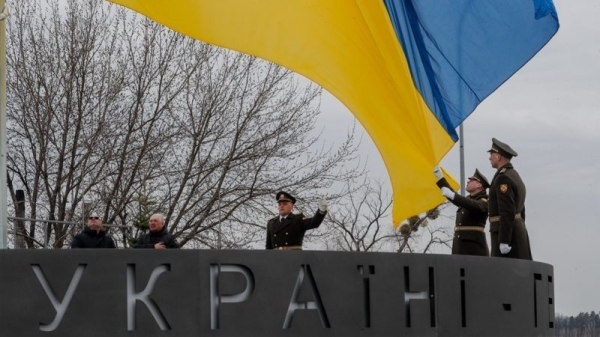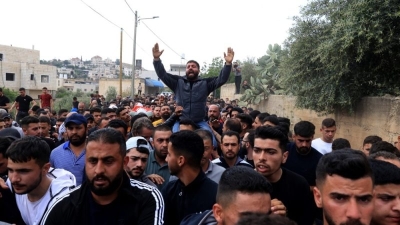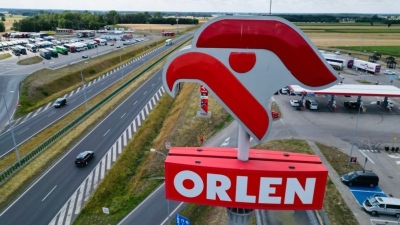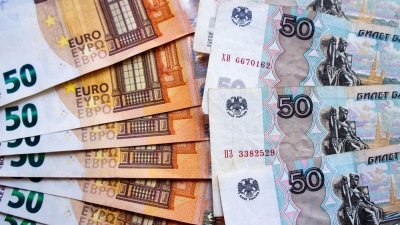A proposal for Ukraine’s NATO integration timeframe

The best time to start Ukraine’s NATO integration is when the country’s counteroffensive results will become known, and the July NATO summit in Vilnius should pave the way for it, writes Roman Rukomeda.
It is the 14th month of open Russian military aggression against Ukraine and just two and half months until the NATO July summit in Vilnius.
We are all waiting for Ukraine’s counteroffensive. Ukraine will continue to liberate its territories from the Russian invaders and, either by the end of this year or later will deliver all its regions, including Crimea.
The Ukrainian society is determined to accept all sacrifices, excluding a cease-fire or peace talks, until the total liberation of Ukraine’s territories and the punishment of the aggressor. This is why no compromises should be expected before the end of the military phase of the war, no matter how long it will take.
The critical question is how to end the war after the liberation of all Ukrainian territories if the Russian regime will not fall and continues to attack Ukraine with bombs, artillery and rockets, threatening with new military assaults.
What if Russia will not go to any negotiations and continue to be at war with Ukraine, gathering resources for further attacks and strengthening its network of allies? By the way, it is a very realistic scenario as Russia’s regime will not necessarily fall after the military defeat in Ukraine and probably will not sign any formal treaties or agreements admitting it has lost.
How can we prevent any future Russian aggression against Ukraine or other Eastern European states in such a scenario? The only real answer so far is the integration of Ukraine into NATO under a fast procedure. Until the full integration, Ukraine should be given security guarantees similar to those given to Sweden.
Will this stop Russia from further escalation and attacks on Ukraine? Definitely, yes. Will it lead to more escalation and provoke Russia to some bigger scale of aggression? Absolutely not. Russia will clearly understand that in case of a new attack on Ukraine, it will face NATO forces on the battlefield aside from the Ukrainian army, reducing its chances of military success to zero.
When is the best time to start the process of Ukraine’s integration into NATO? I believe the new phase of the military campaign will begin in May and last over the summer and possibly the autumn.
After that, it will be clear what territories the Ukrainian Armed Forces have managed to liberate; NATO can protect Ukraine in all controlled environments, ideally – internationally within the recognised borders of Ukraine by 2014, including Crimea.
If Ukraine does not prevent all its territories after the new round of military campaigns, then NATO protection will probably not cover those territories that will be under Russian occupation in order not to provoke a direct military conflict between Russia and NATO. US politicians, including President Joe Biden, have already mentioned this scheme.
The procedural discussion should start with announcing the final decisions of the NATO summit in Vilnius in July. If the NATO summit fails to make any concrete announcements about the timeframe of Ukraine’s integration into NATO and the security guarantees to Ukraine in the meantime, the end of the war in Ukraine will be postponed for a long time.
Russia will interpret such a signal as NATO weakness. Its strategy will be the endless continuation of asking themselves what is better: to continue to support Ukraine strongly in the next ten years or longer, or make Ukraine a member of NATO and stop the war this or next year? A protracted battle would undoubtedly spill over far beyond Ukrainian borders, and the export of war to other countries will be very hard to stop.
Ukraine’s fast integration into NATO is not only about stopping the bloodiest and most dangerous war in Europe in the 21 century so far. It is also about resources, including financial ones.
It is much cheaper for the EU and NATO to integrate Ukraine fast, help transform Ukraine’s internal political and military institutions and benefit from Ukraine playing the Eastern outpost of Western democracies. In such a case, the whole of Europe will be united, protected and secured even in growing tensions between the US and China.
Otherwise, war and chaos in Europe that will last for a long time would add to global destabilisation with consequences impossible to imagine.



